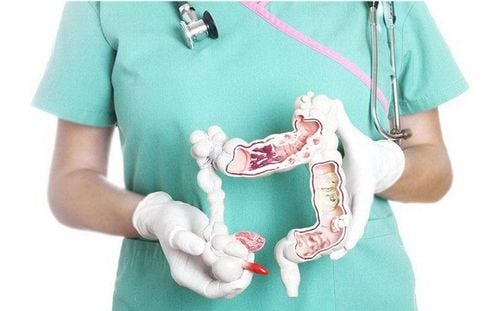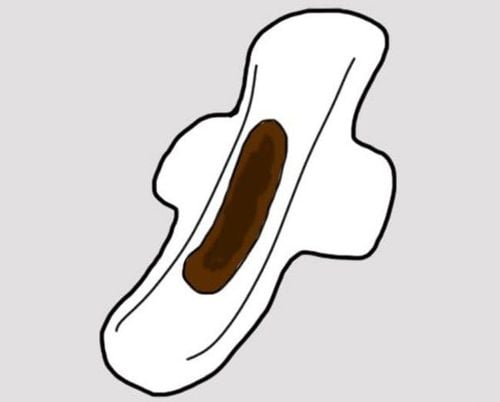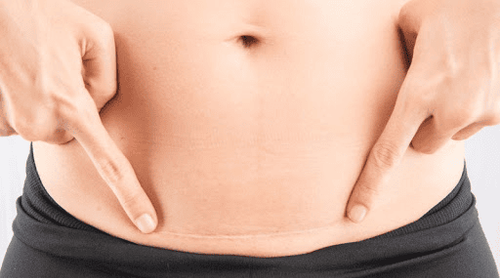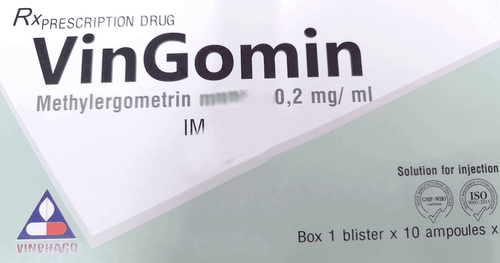This is an automatically translated article.
Postpartum wound infection is a complication of surgery, which can negatively affect the health of the mother and the care of the newborn. Therefore, it is necessary to closely monitor the health of pregnant women to promptly detect signs of infection after giving birth.
1. Risk of wound infection after birth
The rate of cesarean section is currently increasing in many countries around the world, including Vietnam. A number of reasons such as women giving birth less, the rate of children increasing, children compared with pregnancy poisoning, difficult delivery, pregnancy at an older age, ... increase the rate of cesarean section. However, the increased rate of cesarean delivery is also proportional to the rate of uterine incision infection after cesarean section.
Postpartum wound infection is a complication of surgery, occurring after a cesarean section. This condition adversely affects the mother's health, prolongs the post-operative treatment time for women and affects breastfeeding. In particular, the severe form of surgical site infection after birth is infection of the uterine myometrium. It can lead to serious consequences such as: Forced hysterectomy, sepsis, and even life-threatening maternal death if not diagnosed and handled promptly.
2. Causes of infection after childbirth
There are a number of factors that increase the risk of surgical site infection after delivery. These are:
Before surgery: The patient has amniotic fluid infection, prolonged labor, repeated vaginal examinations, vaginitis, underlying medical conditions (diabetes, anemia, pre-eclampsia, obesity, .. .), old incision many times, placenta previa, placenta comb teeth; In surgery: Left placenta, membrane remnants, prolonged surgery time, a lot of blood loss, old incisions stick, tear more, hematoma; After surgery: The patient is not physically active, has fluid retention, hygiene or nutrition is not guaranteed. Studies have shown that about 33% of surgical site infections are preventable. Therefore, it is necessary to raise awareness about the prevention of cesarean section infections before, during and after surgery.
SEE ALSO: Swollen, purulent incision how to treat?

Bế sản dịch là một trong các nguyên nhân gây vết mổ sau sinh bị nhiễm trùng
3. Signs of infection of the surgical site after giving birth
3.1 Clinical features The characteristic manifestation of infection is the festering post-partum incision. In addition, the patient also has other symptoms such as fever, abdominal pain, cloudy and foul-smelling discharge, painful cervical shaking, abnormal vaginal bleeding, diarrhea (more than 3 loose stools per day) ), abdominal distension, loss of appetite, fatigue, dry lips, dirty tongue.
3.2 Laboratory characteristics The limit value in diagnosing uterine incision infection is:
WBC: over 12,000, less than 4,000/mcL; CRP (C-Reactive protein): < 10 mg/l is normal; 10-40 mg/l is a slight increase with age, higher than that seen in the third trimester of pregnancy, mild inflammation and viral infection; 40-200 mg/l is inflammation, infection; ≥ 200 mg/l is severe infection and burns; Procalcitonin (PCT): Indicated when necessary; Blood culture: Positive in 10 - 30% of cases; Ultrasound: Indicated in case of suspected residual placenta, abscess, hematoma, abdominal fluid; X-ray: Signs of intestinal paralysis; MRI, CT: Few indications. Often used to diagnose an abscess or an infected pelvic hematoma.
4. Treatment of infected incision after birth
4.1 Medical treatment Use of antibiotics, combination, intravenous line: Antibiotics kill gram +, gram - and anaerobic bacteria; Using drugs to increase uterine contractions; Monitoring of disease progression, ability to respond to antibiotics, may make a decision to surgically resolve the infection (total hysterectomy) depending on clinical judgment. 90-95% of patients are successfully treated with this method. The patient's fever is gone within 24-48 hours. Clinicians need to monitor a patient's white blood cell count and CRP to look for improvement in subclinical symptoms.
If the patient does not have a fever within this time, the reason for the failure of therapy should be considered. There are many reasons why treatment fails such as: Antibiotics do not cover all strains of bacteria, abscesses, pelvic thrombophlebitis due to infection, progression of infection in another site of the body,. .. It is necessary to change antibiotics if the patient does not have a fever within 3 days of treatment.

Người bệnh có thể được chỉ định điều trị nội khoa vết mổ sau sinh bị nhiễm trùng
4.2 Surgery This treatment is indicated when the patient does not respond well to antibiotic therapy or has surgical abdominal signs. The following treatment options are available:
Conservative: Excision of the infected uterine muscle if the remaining uterine muscle remains pink and elastic, in young patients who have not had enough children. The doctor should advise the family about the possibility of having to have a repeat operation to completely remove the uterine muscle; Total hysterectomy, leaving 2 ovaries in case of severe infection of the uterine muscle or the woman is old enough to have had enough children. Choosing a surgical method still requires drainage and maintaining the patient's antibiotic use.
When choosing a cesarean section, pregnant women and their families need to pay attention to the signs of an infected incision after giving birth to promptly notify the doctor and intervene quickly to avoid the risk of dangerous complications. dangerous.
After giving birth, the mother's body changes, and the mother can suffer from many diseases such as postpartum hemorrhage, urinary incontinence, digestive disorders, etc. In particular, many mothers who give birth by cesarean section suffer from infection. wound infection. Therefore, after giving birth, the mother should have a general health examination at Vinmec International General Hospital to assess her postpartum health. Mothers will have the opportunity to visit with leading specialists in the field, combined with many other specialties to give advice, care, and help improve their postpartum health, quickly recover and improve their health. take good care of the children.
Please dial HOTLINE for more information or register for an appointment HERE. Download MyVinmec app to make appointments faster and to manage your bookings easily.













